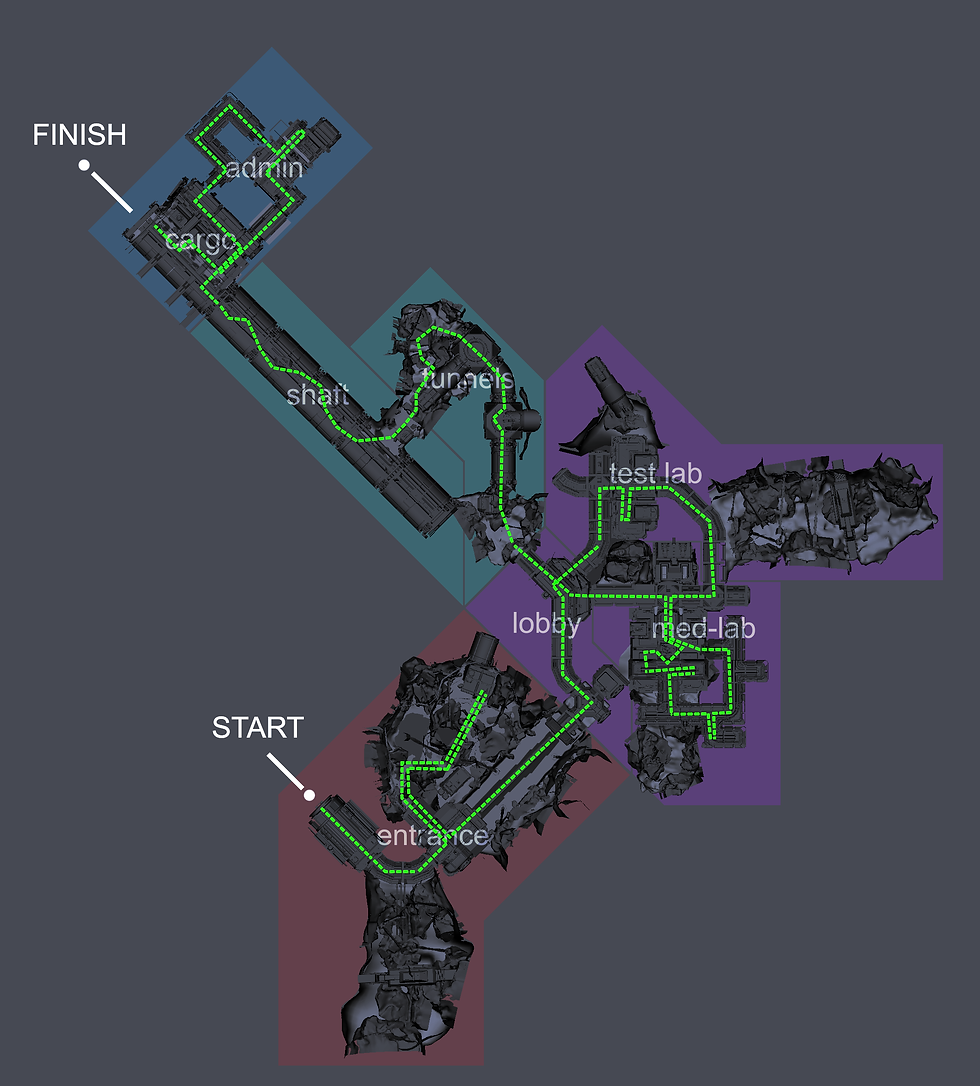LONE ECHO II
Ready At Dawn
ROLE
-
Level Designer
-
Levels | Missions | Encounters
TOOLS
-
RAD Engine (proprietary)
-
Autodesk Maya 2025
PLATFORM
-
Oculus Rift S
-
PC (Dev & Internal Playtests)
SEMI-OPEN WORLD
CHIRON STATION | Level Design, Mission Design, Art
I collaborated early with Directors and the Narrative team on Lone Echo II to help define the structure and spatial flow of the "future" game world. We aimed to guide players through key story moments while supporting exploration, pacing, and VR comfort.
Using Mural, I mapped out area connectivity and iterated on flowcharts to refine pacing and progression before drafting one-sheets and building early greyboxes.
Once the macro layout was approved, I took ownership of several major spaces including Habitat A, the Research Facility, and the Past Sequences. I led pods of artists and designers across each of these areas, working closely to align narrative, gameplay, and visual goals.
Being susceptible to motion sickness myself, I focused on VR player comfort at every stage. I achieved this by balancing navigational clarity and sightlines to support a smooth experience.


LEVELS
RESEARCH FACILITY | Level Design, Puzzles
The Research Facility tasked players with exploring a derelict station overtaken by bio-mass to retrieve a critical sample hidden deep within. I designed this space to evoke a sense of mystery and tension through atmospheric level design, puzzles, and environmental storytelling.

Facility Layout
Focus was on delivering a slower, more methodical experience in this area, using liminal corridors, contaminated rooms, and fragmented VO cues to create a sense of unease. The tone was intentionally darker and more subdued, supporting a narrative that unfolded through set dressing, environmental clues, and gradual player discovery.
The level followed a mostly linear structure, but gameplay was enriched through puzzle areas and traversal sequences. Players had agency in how they approached many challenges, often using the Cloak Emitter tool to bypass hazards and unlock alternate routes.
Key elements of this space included:
-
Environmental storytelling through liminal spaces and decay
-
Multi-step puzzles integrated with traversal and stealth
-
Use of the Cloak Emitter to support non-linear problem-solving
-
Encounter scripting and puzzle logic built with internal tools
-
Close narrative coordination to support story pacing and reveal



